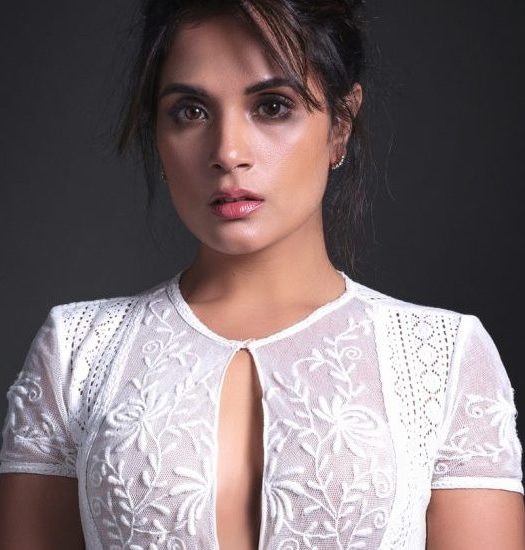The stories in Parched find resonance universally and eternally : Leena
Leena Yadav’s Parched which releases on September 23 explores various aspects of sexuality and freedom which are rarely spoken about. The director hopes that the film works as a stimulus to initiate a discussion about these vital issues in our country.
In a tete-a-tete with Pandolin, the director talks about the origin of the film, working with a predominantly female cast and her journey to becoming a filmmaker.

Leena Yadav (Right) with Cinematographer Russell Carpenter
What is Parched all about?
Parched is the story of ordinary women, in rural India, who question and then dare to break free from century-old traditions that have kept them locked in servitude.
How did the idea about making film on women living in rural India come about? Are these stories in Parched based on real life?
I travelled the Kutch region with actor Tannishtha Chatterjee in search of stories. The landscape fascinated me and provided the right foil for the kinds of stories we wanted to tell. The stories are an amalgamation of many real life stories that we heard, not just from Kutch villages but from across the world. Circumstances may be different and cultures may be different – but at the heart of it, the stories are the same. And these stories find resonance not just universally but also eternally.
READ: I HAVE DONE LIGHTER ROLES BUT IT GETS OVERSHADOWED BY SERIOUS ONES
How difficult is it for women to talk about sex and desires openly in a country like ours?
Parched explores various aspects of sexuality and freedom. And it is time we talked about a lot of issues. The idea is not about looking for the right or wrong or identifying the villain. The idea is to create a discussion.
The idea is not about looking for the right or wrong or identifying the villain

Still from Parched
How difficult was it to produce a film with no stars, and mainly female cast?
It was very difficult! But because it was so difficult, we attracted the right people to support a project like this. They were people with the right sensibilities. People who were in tune with why we are making this film. From Ajay Devgn who supported this film to Gulab Singh and Rohan Jagdale, we were all on the same wavelength and have produced ‘Parched’ together. They all supported Aseem and me to make the film without any compromise.
Please talk about collaborating with Cinematographer Russell Carpenter for the film. Why didn’t you collaborate with your husband and cinematographer, Aseem Bajaj, on the project?
Since we were producing the film, one of us had to do full time production. We wanted to get someone who Aseem and I have admired for years. And we were thrilled when Russell reacted so well to the script and agreed to bring it to life with his visuals! Russell is a big boon to Parched. He has literally painted each frame of the film. I was amazed at Russell’s sensitivity to the narrative and his ability to embrace another culture and way of life with so much faith and humility.
Russell has literally painted each frame of the film
The film boasts of four of the best female actresses in India. How did the casting happen?
Casting was a long process of finding the right person for each role. Tannishtha Chatterjee and Radhika Apte were the first to get on board. After which, Mukesh Chhabra and his team, Vaibhav Vishant and Aakash Bhojwani helped us with most of the casting. And I think each and every member of the cast has delivered a great performance.
READ: YOU CAN LITERALLY COUNT THE FEMALE FILMMAKERS AROUND THE WORLD

Still from Parched
Do you think this is a good time for women-oriented films or say films that have women as the main protagonists?
If a film manages to speak to the audience and gets them into the theaters it is a good time for that kind of film. We don’t make films with calculations of whether it is a good time or not. The very fact that we are drawn to a particular subject means that it is something that is topical in some way. And I hope for a time when terms like ‘women-oriented’ or ‘women-centric’ films do not exist. It is either a good film that talks to you or not! That is enough judgement for a film!
What inspired you to get into filmmaking? And what keeps you going?
The idea of sharing stories and bringing ideas to life got me into filmmaking. I am a storyteller. I get to collaborate with so many imaginative storytellers during the course of making a film. And the high point is when we are all telling the same story – it’s the high that keeps me going.
READ: IT’S A GOOD TIME TO ENCOURAGE PEOPLE TO LOOK AT WOMEN CHARACTERS


